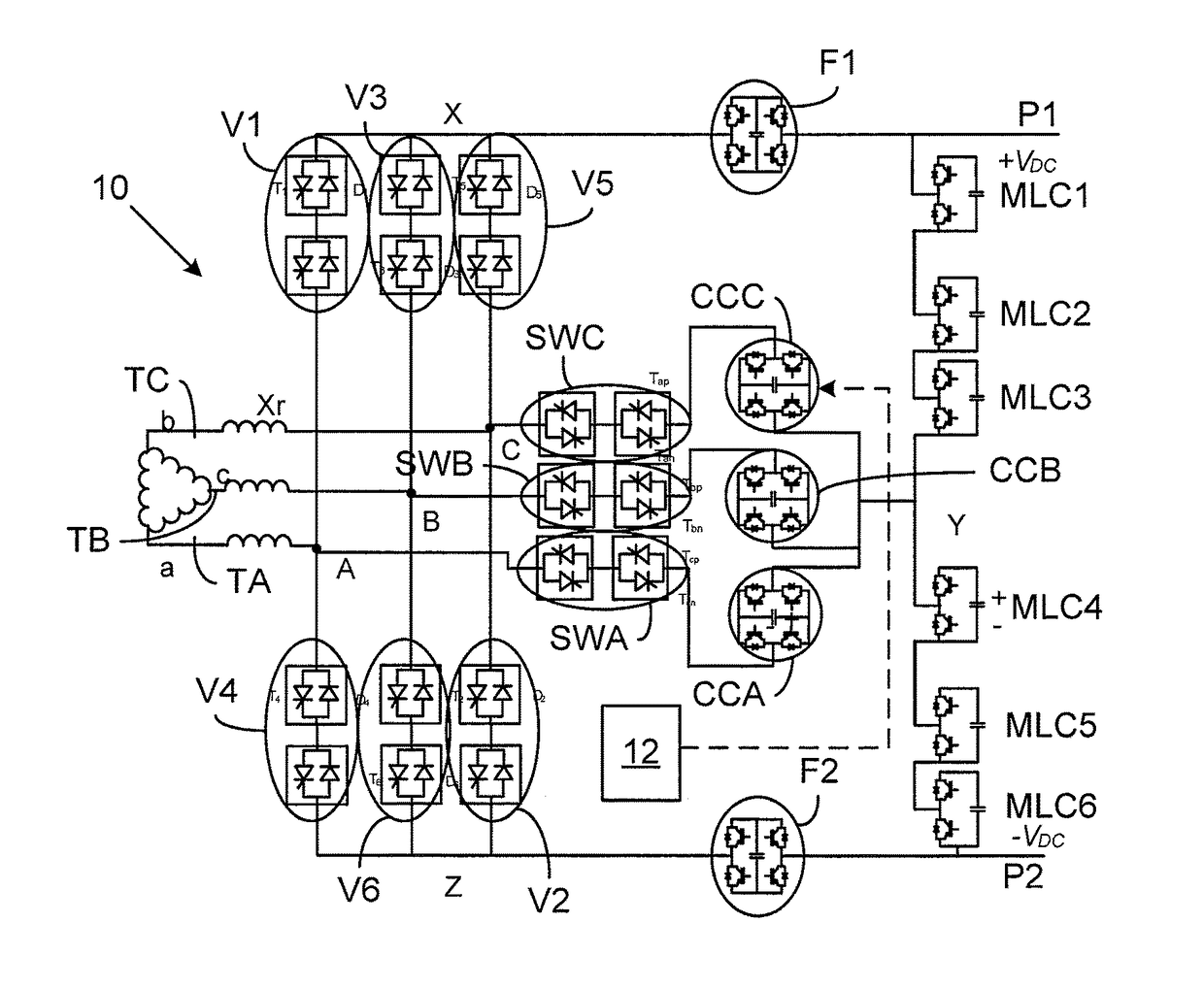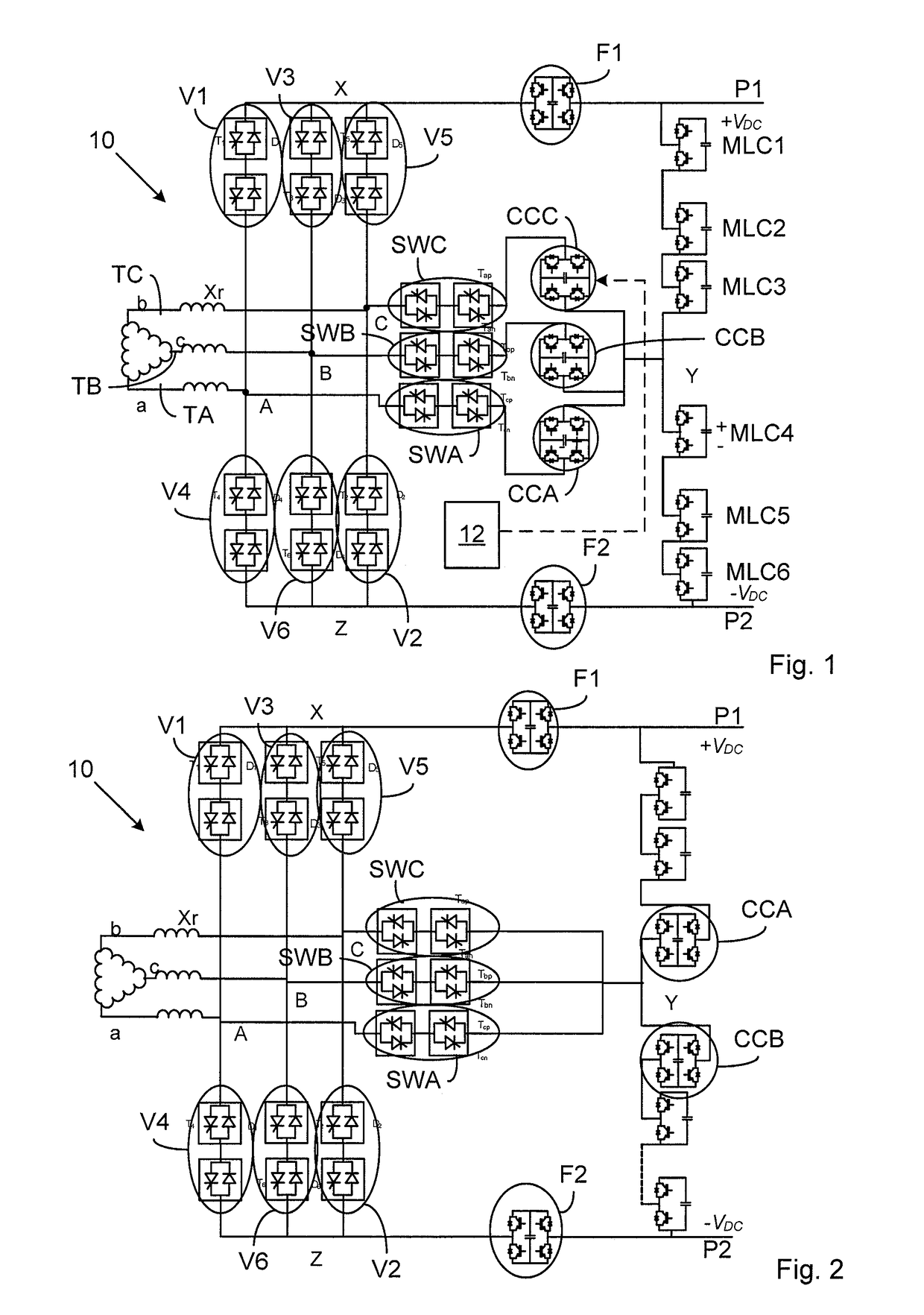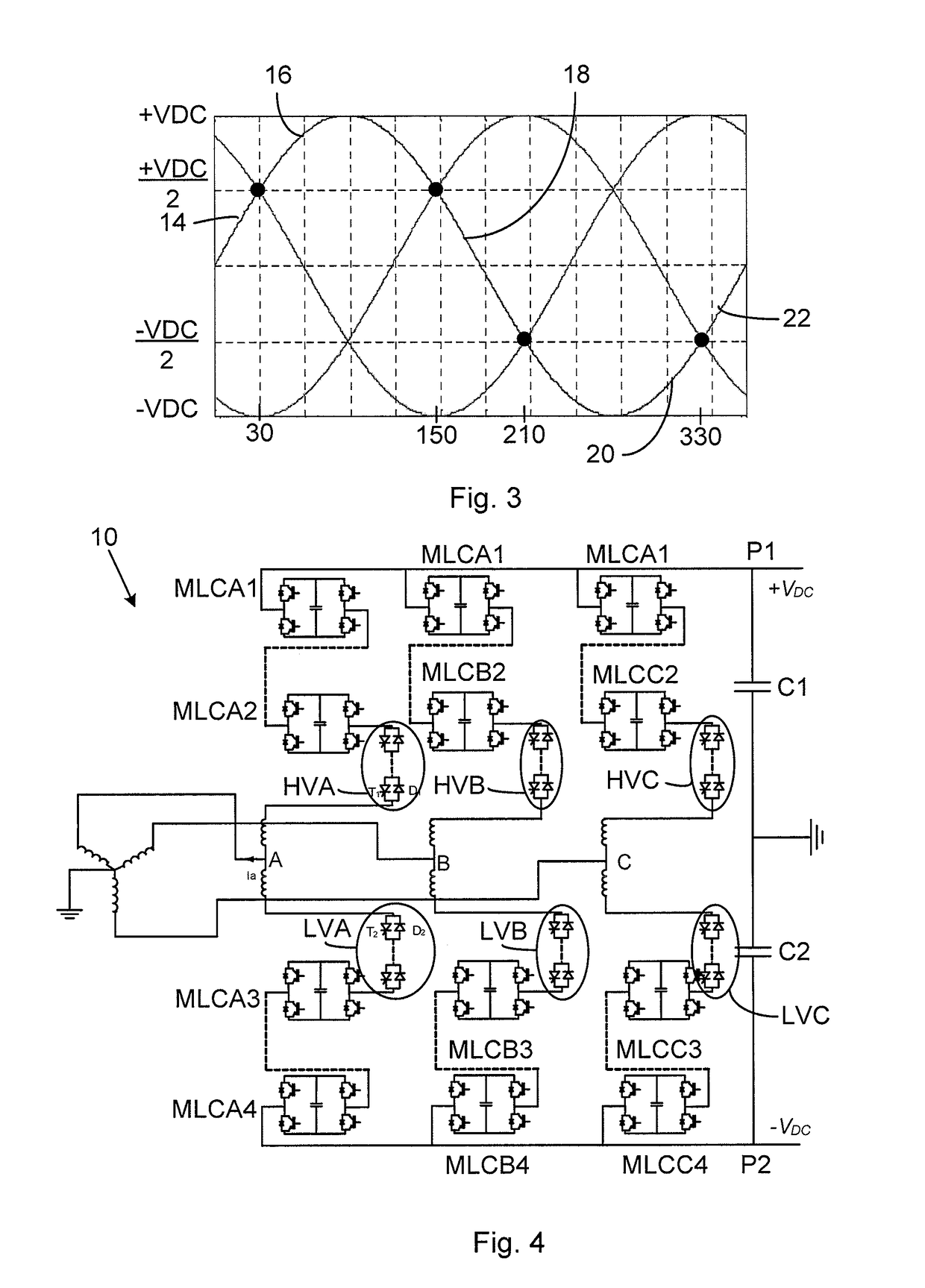Thyristor based voltage source converter
a voltage source converter and thyristor technology, applied in the direction of ac-ac conversion, power conversion systems, electrical apparatus, etc., can solve the problems of large footprint, slow control, inability to improve ac grid stability, etc., and achieve the effect of significantly reducing the cost of valves
- Summary
- Abstract
- Description
- Claims
- Application Information
AI Technical Summary
Benefits of technology
Problems solved by technology
Method used
Image
Examples
Embodiment Construction
[0024]In the following, a detailed description of preferred embodiments of the invention will be given.
[0025]FIG. 1 shows a converter 10 according to a first embodiment of the invention. It comprises a three-phase bridge made up of a number of phase legs. There are in this case three phase legs. There is a first phase leg, a second phase leg and a third phase leg. The phase legs are more particularly connected between a first and a second direct current (DC) pole P1 and P2, where the first pole P1 provides a first voltage +VDC and the second pole P2 provides a second voltage −VDC. The mid points of the phase legs are each connected to a corresponding alternating current terminal TA, TB, TC. The midpoints are here connected to an alternating current (AC) terminal TA, TB and TC via a corresponding reactor Xr and the AC terminals are in turn connected to windings of a transformer TR, which windings in this case as an example are delta-connected.
[0026]The phase legs are in this first em...
PUM
 Login to View More
Login to View More Abstract
Description
Claims
Application Information
 Login to View More
Login to View More - R&D
- Intellectual Property
- Life Sciences
- Materials
- Tech Scout
- Unparalleled Data Quality
- Higher Quality Content
- 60% Fewer Hallucinations
Browse by: Latest US Patents, China's latest patents, Technical Efficacy Thesaurus, Application Domain, Technology Topic, Popular Technical Reports.
© 2025 PatSnap. All rights reserved.Legal|Privacy policy|Modern Slavery Act Transparency Statement|Sitemap|About US| Contact US: help@patsnap.com



